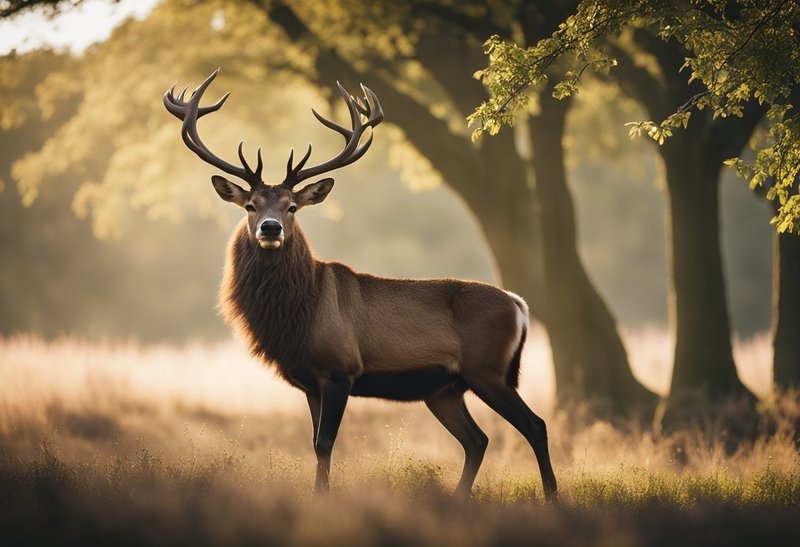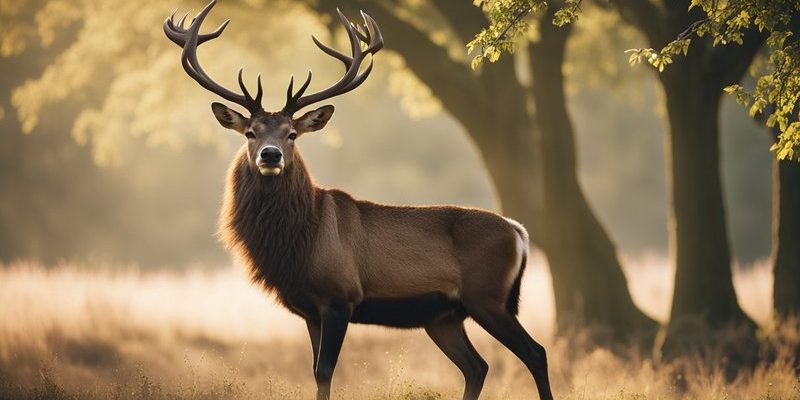
So, pull up a chair and let’s dive into the world of stags. From their social behavior to their habitat, we’ll explore the truth behind some of the most popular beliefs surrounding these animals. You might be surprised by what you learn!
Myth 1: Stags Are Solitary Creatures
Many people believe that stags prefer to live alone, but that’s a misconception. While male deer might be solitary during certain times of the year, particularly during the mating season, they often live in groups known as *herds* during other times. These herds usually consist of females and their young, with males joining them during the rut, which is the breeding season.
Here’s the thing: being part of a herd provides safety in numbers. Stags, like many animals, rely on their companions. When they are together, they can alert each other to danger and increase the chances of survival. If you’ve ever seen a nature documentary, you’ve likely noticed stags grazing peacefully alongside other deer. It’s a beautiful thing to witness!
Myth 2: All Stags Have Huge Antlers
You might think that all stags are adorned with massive antlers, but this isn’t true. The size of a stag’s antlers can vary widely based on several factors, including age, health, and species. For instance, younger males may have small, underdeveloped antlers, while older stags often boast impressive racks.
Antlers are not just for show; they serve a significant purpose. During the mating season, stags use their antlers for display and combat to win the favor of females. However, if a stag is young or not well-nourished, its antlers may not reach the same size as those of a dominant male. So, next time you spot a stag, remember that there’s a lot more to those antlers than meets the eye!
Myth 3: Stags Are Aggressive All the Time
Another common myth is that stags are aggressive creatures lurking around, waiting to charge at unsuspecting humans. While stags can be aggressive, especially during the rut, most of the time, they are quite docile. Just like us, stags have moods! They usually prefer to graze peacefully, not looking for a fight.
However, during the mating season, male deer can become territorial and protective, which might lead to aggressive behavior. It’s crucial to respect their space during this time. If you encounter a stag in the wild, it’s best to keep your distance and enjoy the view without provoking them. After all, they’re just trying to do their thing!
Myth 4: Stags Are Only Found in the Forest
While forests are a common habitat for stags, it’s a misconception to think they only live in these areas. Stags can adapt to a variety of environments, including grasslands, wetlands, and even suburban areas. In fact, some species of deer are quite comfortable living near humans and can often be spotted in parks or golf courses.
Their adaptability is a testament to their survival skills. Stags will choose habitats that provide sufficient food and cover. Whether it’s a dense woodland or an open field, these animals know how to make the most out of their surroundings. So, if you’re in a region with stags, keep an eye out—they could be closer than you think!
Myth 5: Stags Don’t Migrate
Many assume that stags are sedentary animals that stick to one location, but this isn’t the whole story. While some deer species have a home range they stay within year-round, others do migrate seasonally in search of food or better breeding grounds. For example, during winter months, stags might travel to lower elevations where food is more accessible.
Migration is a fascinating aspect of their life that showcases their resilience and adaptability. It’s like a seasonal road trip for them! Just imagine how they navigate these journeys, facing challenges like predators and harsh weather. Understanding this behavior adds depth to our view of stags and highlights their survival instincts.
Myth 6: All Stags Are the Same Species
It’s easy to think that all stags belong to one species, but in reality, there are many different species of deer around the world. Some of the most well-known include the Red Deer, Wapiti, and White-tailed Deer. Each species has its unique characteristics, behaviors, and habitats.
For example, Red Deer stags are well-known for their impressive antlers and can grow to be quite large. On the other hand, the smaller Roe Deer has a different set of habits and habitats. Recognizing the diversity among stags is essential for appreciating these animals and their roles in their ecosystems.
Myth 7: Stags Only Eat Grass
You might picture stags munching on grass, but their diet is more varied than you might think. Stags are *herbivores*, but they eat a range of vegetation, including leaves, fruits, and shrubs. Depending on their habitat, they can adapt their diet based on what’s available.
During spring and summer, stags often enjoy tender shoots and leaves. In the fall, they might feast on acorns and berries. Their diverse diet not only supports their health but also impacts their environment. By feeding on different plants, they help maintain the ecosystem’s balance, which shows just how interconnected everything is in nature.
Myth 8: Stags Are Unfriendly to Each Other
Lastly, there’s this idea that stags are all about competition and hostility, but they can also be quite social creatures. When not in the rut, they often engage in social behaviors like grooming and bonding. You might find them playfully sparring with one another or grooming each other’s fur, which strengthens their social bonds.
In groups, stags communicate through body language and vocalizations, showing their emotions and intentions. So, while they may seem tough with those antlers, there’s a friendly side to them that’s worth acknowledging.
Understanding stags can help us appreciate these magnificent creatures more deeply. By debunking these common myths, we’ve uncovered the truth behind their behavior, social interactions, and habitats. Whether you’re an animal lover or just curious about wildlife, knowing the facts about stags can enrich your experience in nature.
So, the next time you see a stag in the wild, take a moment to observe and appreciate the complexities of its life. They’re not just symbols of strength and grace; they’re part of a larger ecosystem that thrives on balance and interconnectedness. Happy exploring!

